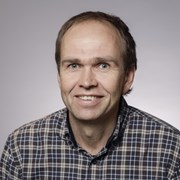The first part is implemented in MATLAB and consists of a chain of tools of increasing computational complexity:
- (Graphical) tools for estimating structural trapping capacity and migration paths from injection points.
- Simulation tools based on an assumption that the CO2 plume and the resident brine are in vertical equilibrium. The tools efficiently predict the amount of trapping taking place over thousand-year periods and provide a detailed CO2 inventory that accounts for structural, residual, and dissolution effects. The tools are often more accurate and orders-of-magnitude faster than traditional 3D simulations.
- Traditional two-phase and black-oil type 3D simulators with sensitivities and representative PVT models that are useful for studying the injection phase.
- A large set of tutorials and examples, input of industry-standard data formats, as well as simplified and automated access to public benchmarks and datasets.
Example: The Sleipner injection project started in 1996 and was the world’s first demonstration of carbon dioxide capture and underground storage. Many organizations have been involved in modeling the injection and monitoring that the injected CO2 is behaving as predicted and is not migrating out of the intended storage site. In particular, a lot of effort has gone into matching simulations with time-lapse 3D (4D) seismic data. By a manual and judicious change of parameters, made possible by our highly efficient vertical-equilibrium simulators, we obtained significantly better match than what had previously been observed in 3D simulations. Read more..
The second part is implemented in C++ as part of the Open Porous Media (OPM) initiative:
- Traditional two-phase and three-phase flow models, support for advanced well handling and gridding (Cartesian, stratigraphic grids, fully unstructured grids), and comprehensive routines for parsing the input from industry-standard geomodelling tools.
- Can model both the injection period and the post-injection migration of CO2 and has been verified on benchmarks from the petroleum literature and validated on models of the Johansen formation and the Sleipner injection.


